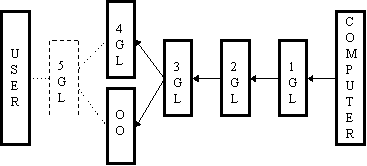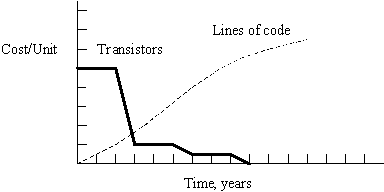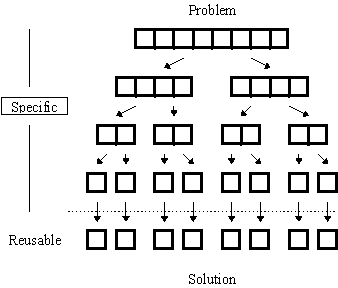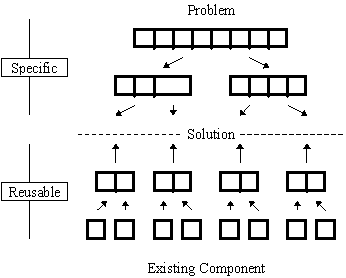Let’s take a brief look at the history of software development so that we may gain some insights of its development into the future.
As is known programming languages can be classified into generations. The first generation is what machine can quickly understand but people can not. It is a machine code (1GL). The mnemonic of that code, which makes some sense to people, forms the second generation (2GL). High level languages which we are familiar with such as FORTRAN, COBOL, Pascal and C are usually thought of as the third generation (3GL). They are conventional programming languages. These languages are independent of the machine and are regarded as function-orientated. The fourth generation language (4GL) is a nonprocedural programming language wherein users indicate IPOS (input, processing, output and storage, a four-step computer-related process) specifications with simple commands. The fifth generation languages (5GL) are not mature yet at present. They belong to AI domain such as Lisp, Prolog.
Figure 1 - The language generation evolution
However, classifying programming languages into generations does not seem to be as accurate as classifying computers into generations. (The generation of computer has a clear concept. But for the software, it is not very suitable to classify them by the above general criteria.). The primary purpose of any high level programming language is to support the software development process by abstracting away from the underlying machine and providing the user with a logical means of expression that wouldn’t otherwise be possible. Using assembly language (2GL), the programmer need not decode machine codes (1GL) and instead he thinks about words. Procedural languages (3GL) hide the complexity of the operations upon data. Object-oriented (OO) languages hide the data and the complexity of the program. Object-oriented techniques are a practical step on the way away from the machine but closer to the user.
The object oriented paradigm is regarded as the direct result of the failure of the conventional language in dealing with large problems.




